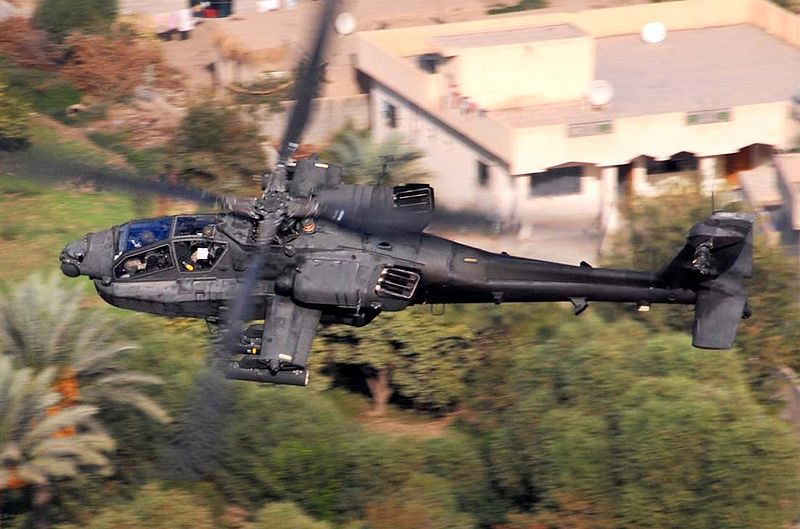When war came in March 2003 the Apaches found themselves in a position of importance. A strike by F-117’s to try and kill Saddam Hussein had failed. The Ah-64’s crossed the border to target command and control as well as observation posts. Artillery fire had preceded the choppers with mixed results, so they attacked those targets to make no mistake.
The 21st of March brought the Apache back to the point for which it was initially conceived and an Iraqi T-54 tank fell victim to an Apache’s Hellfire III missile. It would not be the only one. The Iraqi’s provided some unlikely targets with pickup trucks with machine guns or missile launchers hastily mounted in the back.
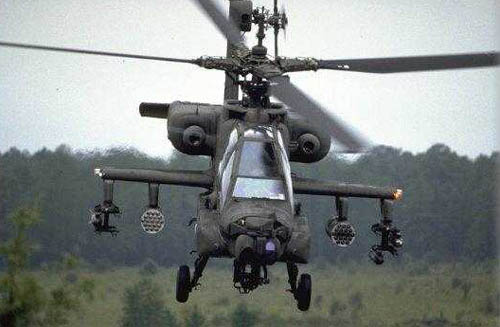
These vehicles were fast and mobile, but when they were caught they had little chance of survival. The choppers 30mm chain gun and 2.75” rockets tore many of these vehicles apart.
Things would not go all the Apache’s way however. A planned attack on a Republican Guard Division near the city of Karbala had problems right from the start. The gridlock being experienced on the roads meant that not all the supplies for the operation arrived on time. This meant that not all the choppers could be made ready for the attack.
To make matters worse one of the choppers crashed on take-off after the crew became disoriented in the total brownout condition. The crew escaped the wreck and the Apache was later repaired.
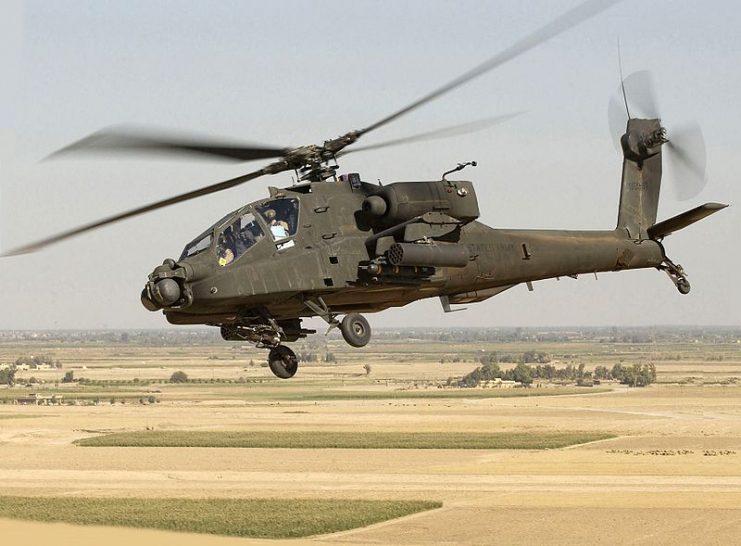
The battle that raged was ferocious. The Apaches did manage to destroy 12 tanks several sundry vehicles and AAA, but virtually all the choppers took damage, crewman injured, one being shot in the neck and one Apache shot down and its crew captured. The AH-64’s were offline for almost a week while repairs were conducted.
The Apache on the Modern Battlefield
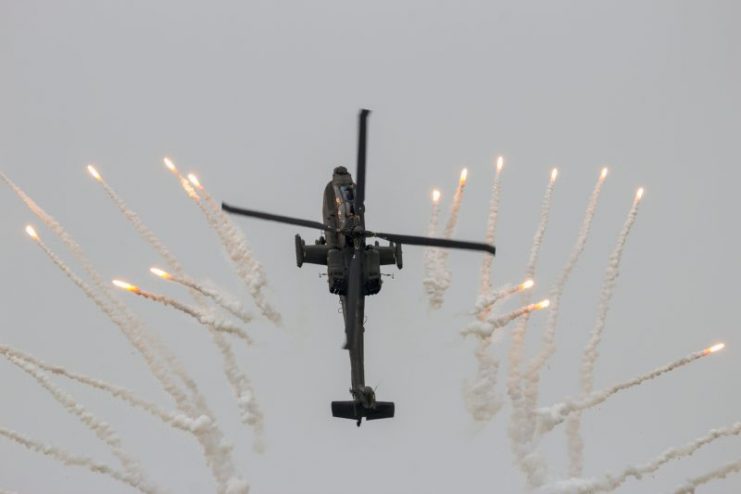
The Karbala operation was not an unmitigated disaster as some reported it to be. Yet it was certainly a point of concern. The Ah-64’s had not been able to carry out the mission assigned to them as well as was expected. This raised the old question: Can the AH-64 operate and survive on a modern battlefield?
When Operation Destiny Reach came down the pilots knew more than the mission was riding on the backs of their choppers. Again the mission got off to a bad start with a AH-64 crashing shortly after take-off, again in brownout conditions. From there the mission improved.
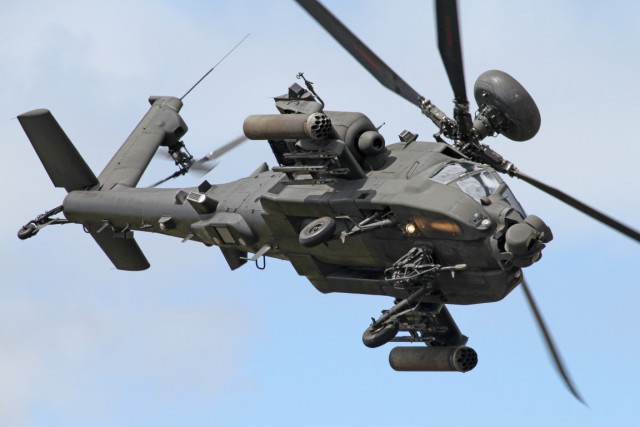
The preceding artillery barrage was on target and kept the Iraqi’s heads down. They were not yet organized when the Apache’s commenced their attack. When the AAA was too heavy they pulled back and fixed wing aircraft engaged the ground targets. The Ah-64’s crept back into their weapon range and fired on any target that presented itself.
The mission scored a mix of 12 tanks and APC’s, 11 AAA, 3 artillery pieces and 20 soft skinned vehicles. Supporters of the Apache say this mission is proof of the choppers place in the Army arsenal. Detractors say the Apache only achieved any success due to it being a joint strike force including fixed wing ground attack planes.
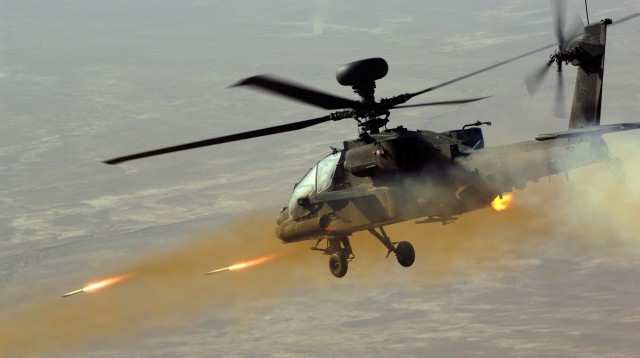
It is possible that there is some truth in both sides. The Apache is a formidable weapon system but only in its own element. The modern battlefield is changing and it may well be impossible for any chopper to operate deep behind enemy lines without support now. Others feel that to expect any weapon system to operate alone is unrealistic and that a Joint Strike Force is reasonable.
During the push to Baghdad the choppers saw little action. More often than not they found themselves flying ahead of the Allied forces on intelligence gathering missions. Though fighting around the city saw more than 40 enemy vehicles destroyed.
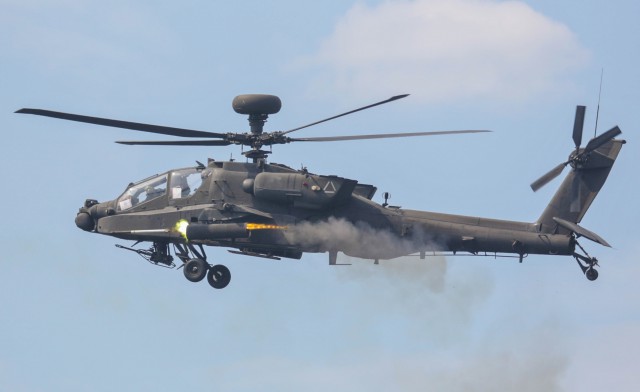
There were occasional clashes with hidden Iraqi AAA batteries hidden in trees and the like, which were disconcerting when they fired on passing Apaches and sometimes scoring hits though none were shot down. By April however much of Saddam’s army had given up on the war. Many are believed to have returned to their families when the military infrastructure collapsed, and they would not be shot for desertion. This left only the fanatical and foreign insurgents to continue the fight.
The Apache remembers Vietnam
While many of the Allied governments were very quick in trying to distance any relation to the Vietnam War, it was proving hard not to see comparisons. The Apaches were already adopting tactics and techniques used by their aerial forefathers in that war and more would be coming.
They were doing so because the mission requirements of fighting insurgents were more in line with the tactics used by the Huey’s over the jungles of Vietnam. The war was over, now came the police action.
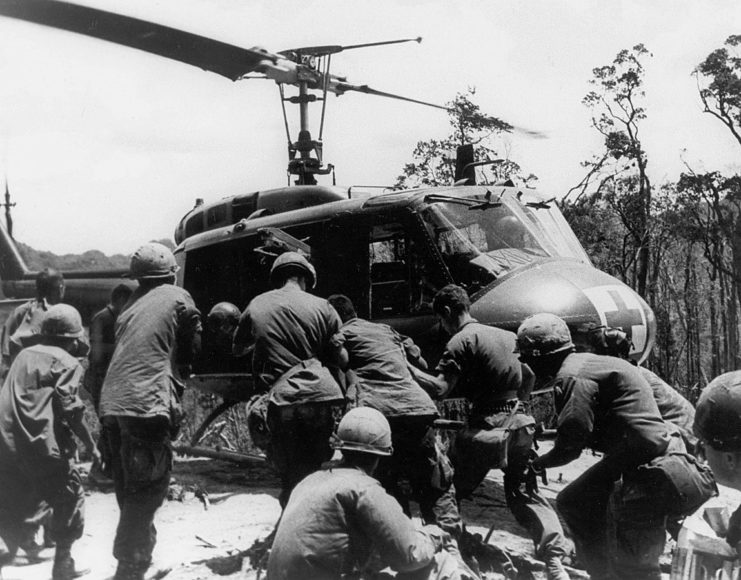
Like the VC from Vietnam the Iraqi fanatics fought the war outside of conventional thinking. They used school buses and ambulances to move troops. As well as utilizing 4×4 pickup trucks with hasty, makeshift, but effective weapons.
They placed communications and control centers in schools. The Iraqi military counted on the Allies having a higher regard for the average Iraqi’s life than they did. To the constant frustration of Allied troops, they were right.
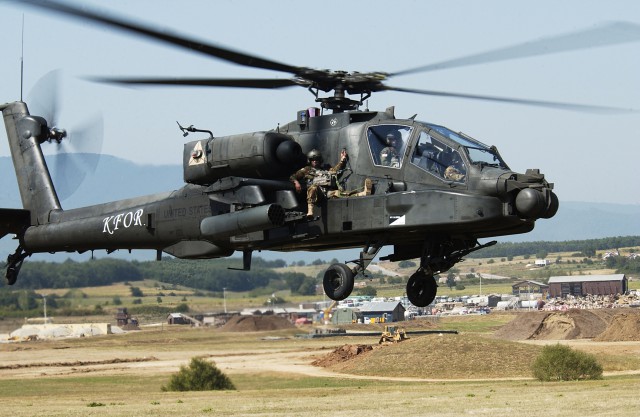
Though operations started to shift towards policing they were no less deadly. On 1st May 2003 Apaches responded to a call near Tikrit. They found more than 12 insurgents loading weapons into a truck. When challenged they decided to engage the gunships with Ak-47’s. The battle was short with the Apache’s 30mm chain gun destroying the truck and killing all 14 insurgents.
The Apache’s found itself more and more often in the support role. Covering ground forces while they moved about cities or towns. On 1st June Allied forces found a terrorist training camp. A joint operation which included air and ground assets.
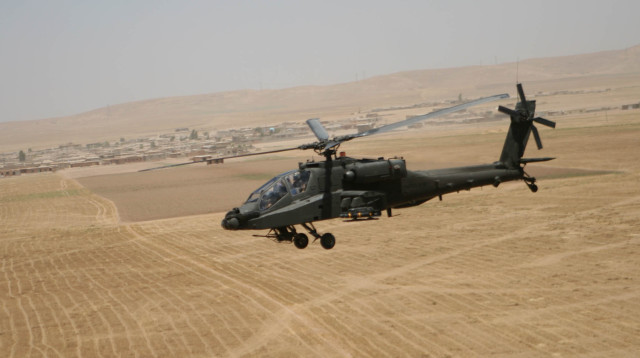
Return fire was both accurate and heavy and to the Apache’s rude awakening an AAA unit which managed to bring one of them down. The crew managed to control crash the chopper and SOCOM ground forces grabbed them before the enemy could. When it was all over 80 insurgents had been killed and a substantial amount of weapons and all without the loss of any Allied soldiers.
The AH-64’s had their own share of woes. Serious mechanical failures had forced Apaches to land in the field and two had burned up after catching fire. In one unit of six Apache’s 5 were down as well as a Blackhawk from another unit which had to set down at their base. The desert was not being kind to choppers.
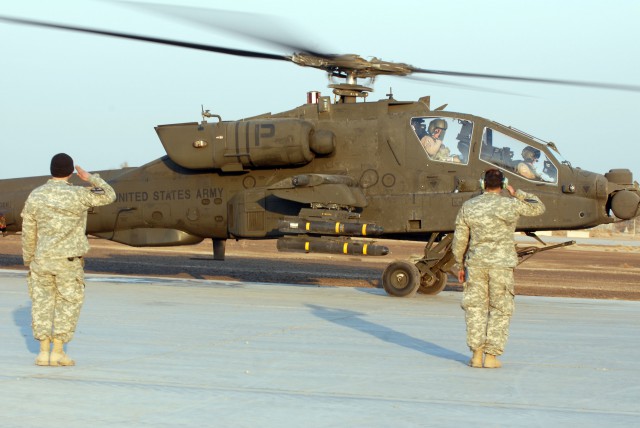
In an action that in some ways typifies the insurgent’s methods was one from the 12th November. A civilian truck was firing 82mm mortar rounds off. It would fire a few shots and relocate before doing it all over again. As they were firing from within a civilian area the Apache was forbidden to engage.
The truck made the mistake of leaving the safety of the area. As soon as it was clear the Apache reduced the van to pieces with its 30mm chain gun. Killing two and wounding three other insurgents who were then captured.
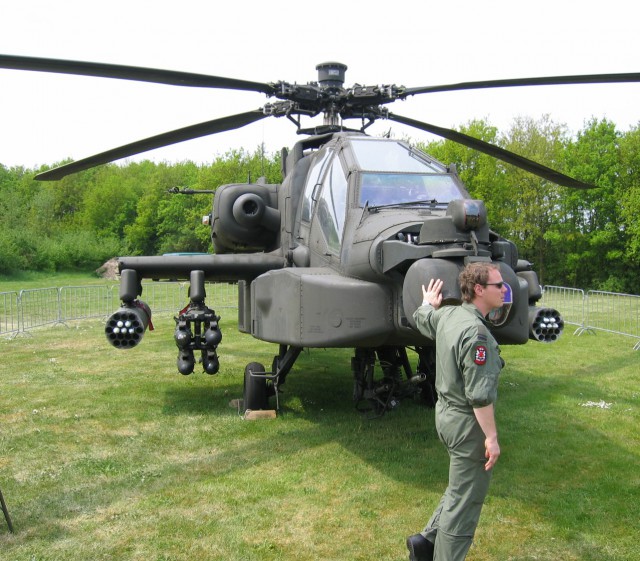
Towards the end of 2003 the insurgent activity increased but there was little the Apaches could do about it. They spent a lot of hours patrolling in front of convoys looking for trouble. Occasionally they would find it. On one occasion in January 2004 they found several ZSU AAA vehicles hidden, though there was no one manning them. The choppers made short work of them.
The Apache’s Mission Changes
Much of the success the Apache is now having is in the aiding of capture of insurgents. Men acting suspiciously may get an Apache called in. On one engagement the chopper found several men planting a roadside bomb. The chopper killed one and wounded three who then proceeded to run into the town.
The Apache backed off but the men were tracked by an unmanned recon aircraft which followed them to a local building. Ground forces stormed the location and found five men, three of which were having a hard time coming up with an explanation for their wounds.
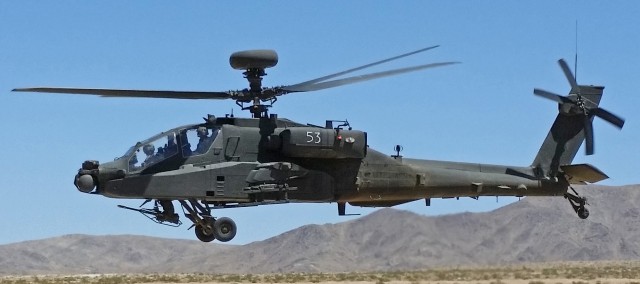
Apache forces have been scaled down in Iraq. At its height close on 150 choppers were in country, now less than a third of that number. The Apache has received a lot of criticism about its serviceability and combat losses.
While the loss of any soldier is tragic the Apache crew deaths have been slight, especially when considering the intensity and close range that many of their support missions put them in. Its actions are often overshadowed by the lack of action they saw, but it was that very lack of action that set them apart.
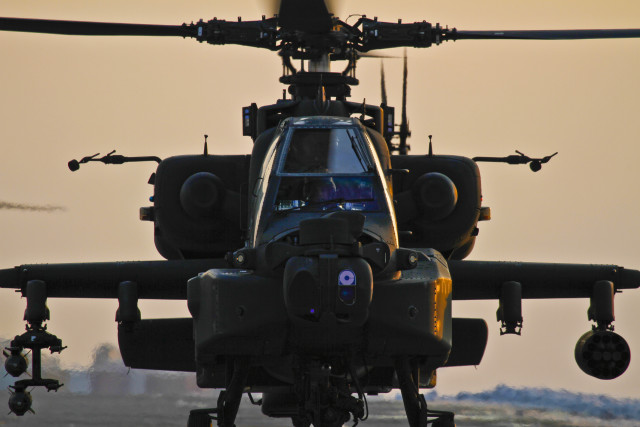
Many locations that had been hot zones became quiet when patrolled by Apaches. Convoy routes that had experienced ambushes became safer. The Apaches message was one of effective deterrence. Insurgents were learning very fast that when they went after an Apache there really was only one thing they could do, and that was die.
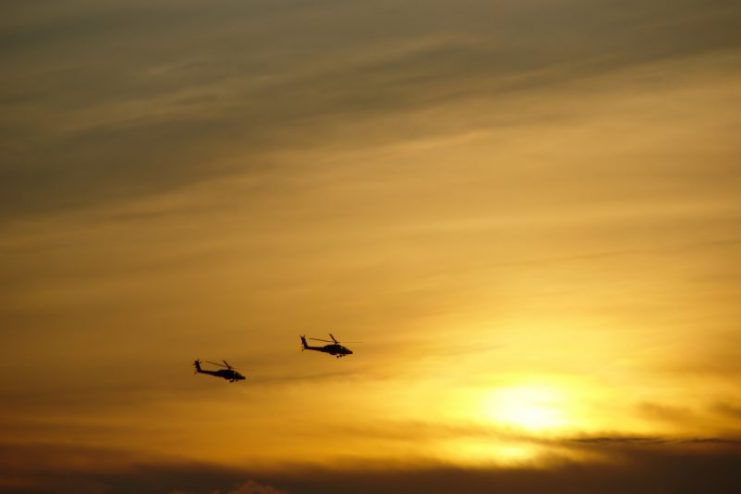
The Apaches will get upgraded and a portion of the budget that was that of Comanche’s will certainly go to the AH-64 program. The Apache may not have become a star in Iraq but it operated in many roles and conditions for which it was never intended for. It is a testament to both the sturdy design and the tenacity and bravery of its crews that the AH-64 has achieved so much.
